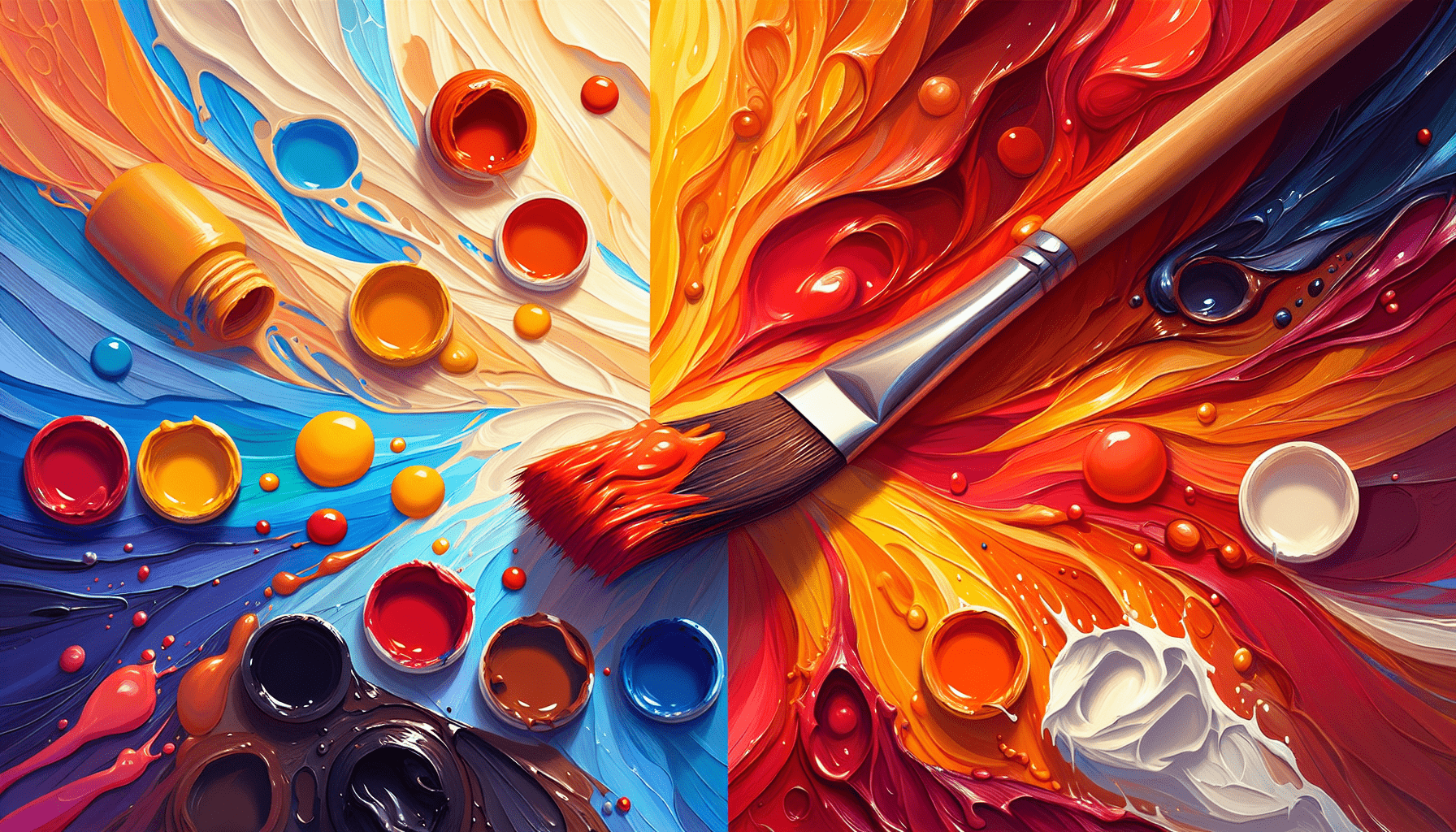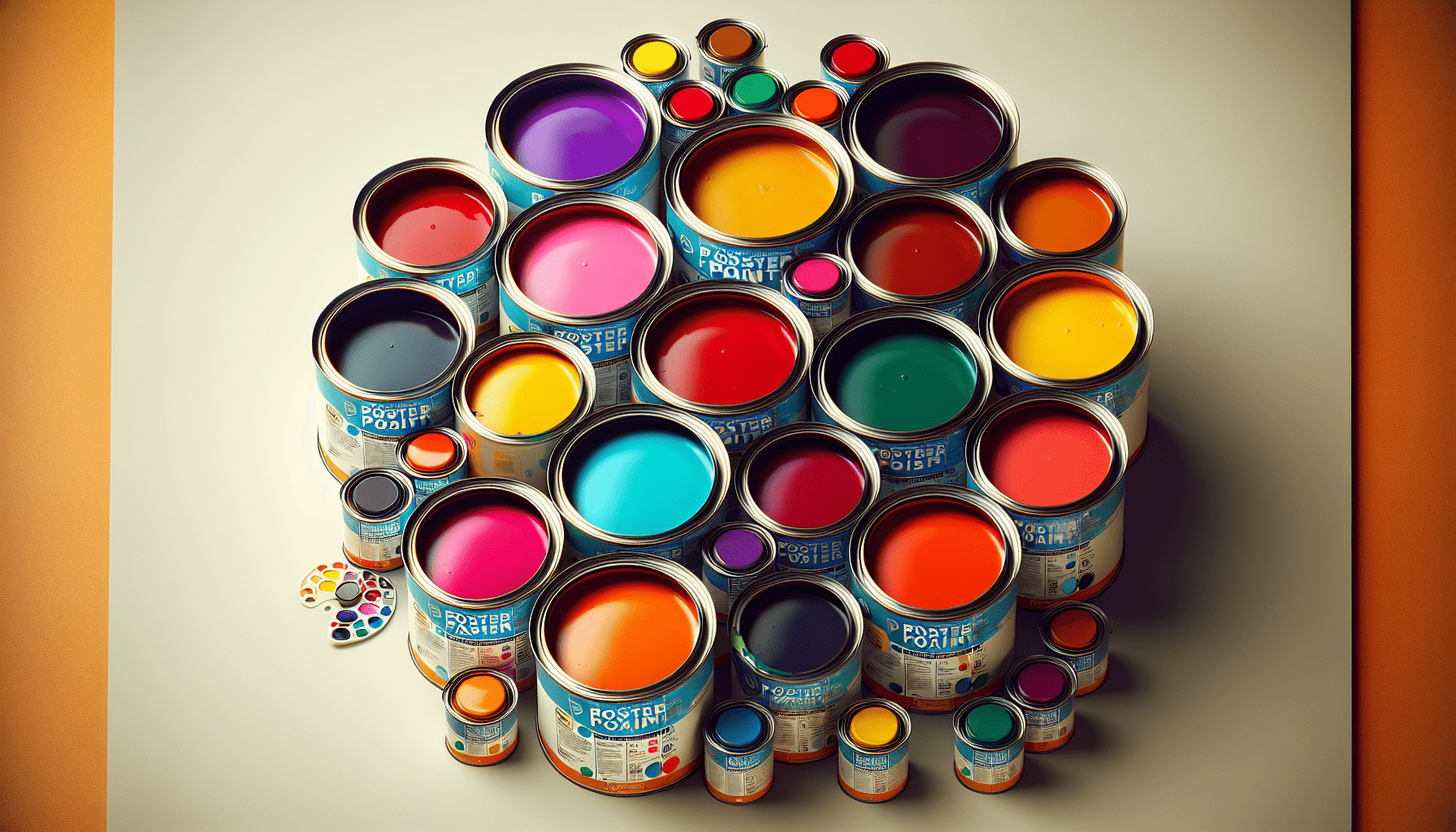Have you ever wondered how to create a stunning sky with poster colours? This article offers a comprehensive guide to help you master this artistic technique. Painting the sky can be a rewarding and therapeutic experience that enhances your artistic portfolio. Here is a detailed, step-by-step guide aimed at professionals and hobbyists alike.

Understanding Your Materials
To achieve the best results, you need to understand your tools and materials. Poster colours are unique compared to other types of paint, such as watercolours or acrylics. They offer vibrant hues and are relatively easy to manipulate.
Choosing Poster Colours
The first step is selecting the right poster colours. The most commonly used colours for painting skies include various shades of blue, white, and sometimes hints of yellows, oranges, and reds for sunsets or dawns.
Quality of Paper
Using good-quality paper specifically designed for poster colours will make a significant difference. Poster colours tend to be thicker and can be stressful on delicate paper. Therefore, a thicker, more absorbent paper is ideal.
Recommended Paper Types
| Paper Type | Description |
|---|---|
| Watercolour Paper | Thick and absorbent; ideal for poster colours |
| Mixed Media Paper | Versatile for various painting mediums |
| Bristol Board | Smooth surface; good for fine details |
Brushes
Having a variety of brushes will help you achieve different effects. Consider flat brushes for large sections of the sky and round or detail brushes for adding intricate elements like clouds.
Brush Types and Their Uses
| Brush Type | Usage |
|---|---|
| Flat Brush | Covering large areas, blending |
| Round Brush | Detail work, adding highlights or thin lines |
| Fan Brush | Creating textures, particularly for clouds |
Preparing Your Workspace
Creating an optimal workspace is essential for any painting project. Ensure that you have a clean, well-lit area. Lay down newspapers or a protective cover to keep your work surface clean.
Organizing Your Materials
Before starting, organize your paints, brushes, water containers, and paper towels. Having everything within reach will make your painting process smoother and more enjoyable.
Mixing Your Colours
It’s advisable to mix your poster colours on a palette before applying them to the paper. This ensures a consistent colour scheme throughout your painting.
Colour Mixing Tips
| Colour Combination | Resulting Colour |
|---|---|
| Blue + White | Various shades of lighter blue |
| Blue + Red | Violet or purple shades |
| Blue + Yellow | Shades of green (useful for horizon) |
Painting Techniques
Understanding different techniques will enable you to create a variety of effects in your sky paintings.
Wet-on-Wet Technique
This technique involves applying wet paint onto a wet surface. It’s ideal for creating soft, blended backgrounds like sunsets or dawn skies. Start by wetting the entire sky area on your paper with water, then apply your poster colours.
Wet-on-Dry Technique
For more defined and intense colours, the wet-on-dry technique is preferable. Apply your poster colours directly onto the dry paper. This technique works well for deep, vivid skies, particularly on bright and sunny days.
Blotting and Lifting
Blotting involves using a paper towel to lift off portions of the paint while it’s still wet. This can create interesting textures and effects, particularly useful for clouds.
Creating Different Sky Variations
Different times of day and weather conditions offer an array of sky variations. Mastering these can make your artwork more dynamic and versatile.
Clear Blue Sky
A clear blue sky is relatively straightforward but requires smooth transitions of blue tones.
Steps to Paint a Clear Blue Sky
- Base Layer: Start with a light blue wash covering the entire sky area.
- Gradient: Gradually add darker blue at the top, blending it smoothly into the lighter blue.
- Final Touches: Add a few streaks of white to depict the sunlight.
Sunset or Sunrise
Sunsets and sunrises offer a more complex, yet rewarding, palette of colours.
Steps to Paint a Sunset or Sunrise
- Background Layer: Begin with a light wash of yellow at the horizon.
- Middle Layer: Gradually add shades of orange, blending upwards.
- Top Layer: Blend in red and finally hints of purple at the topmost part.
- Detailing: Add small streaks of white to symbolize the distant sun’s rays.
Overcast Sky
An overcast sky is characterized by muted, grey tones and diffused light.
Steps to Paint an Overcast Sky
- Base Layer: Start with a uniform light grey wash.
- Middle Layer: Add darker grey patches to depict clouds.
- Final Touches: Use white to lighten certain areas, giving the illusion of sunlight breaking through the clouds.

Adding Details
Once your background is complete, adding details will bring your sky painting to life. Clouds, birds, aircraft, or even a distant skyline can add depth and interest to your work.
Painting Clouds
Clouds can add dynamism to your sky. Using a fan or round brush, you can create various types of clouds.
Techniques for Different Cloud Forms
Cumulus Clouds:
- Use a round brush with white paint.
- Make fluffy, circular motions.
- Add shading with grey to give depth.
Cirrus Clouds:
- Use a fine round brush.
- Paint thin, wispy lines in a curved motion.
Stratus Clouds:
- Use a flat brush.
- Paint horizontal lines with varying intensities of grey.
Adding Birds and Other Elements
You can add birds or other small details using a fine tip brush.
Steps for Adding Birds
- Outline: Sketch the basic shape of a bird in flight.
- Fill: Use black or dark grey poster colours.
- Detail: Add small highlights or shadows to give dimension.
Final Touches and Preservation
After all the elements are added, it’s crucial to review your work for any final adjustments. This could involve adding more colour, blending, or even lightening certain areas.
Reviewing and Correcting
Step back from your painting to gain perspective. Sometimes imperfections or areas that need more work are more apparent from a distance.
Preserving Your Art
Once satisfied, allow your painting to dry completely. Poster colours can be sensitive to moisture and physical damage.
Preservation Tips
| Preservation Method | Description |
|---|---|
| Varnish Spray | Provides a protective coat and shine |
| Glass Frame | Shields from dust and physical damage |
| Lamination | Offers complete protection for durability |
Troubleshooting Common Issues
Even experienced artists face challenges. Here are some common issues and their solutions.
Uneven Colour Spread
If your colours are spreading unevenly, it could be due to the type of paper or the amount of water used.
Solutions:
- Use appropriate paper: Ensure your paper is suitable for poster colours.
- Control Water: Use water sparingly or switch to a thicker grade paper.
Colours Drying Too Fast
Poster colours can dry quickly, especially in a dry environment.
Solutions:
- Moisten your paper: Keep a spray bottle handy to mist your paper.
- Mix with a slower-drying medium: Some mediums can extend the drying time.
Overworking the Paper
Layering too much paint can make the paper buckle or tear.
Solutions:
- Limit layers: Allow each layer to dry fully before adding more.
- Use thicker paper: Opt for professional-grade watercolour or mixed media paper.
Conclusion
Painting the sky with poster colours is an engaging artistic endeavor that can yield stunning results. By understanding your materials, employing various techniques, and paying attention to detail, you can create skies that captivate and inspire. Whether you’re painting a clear blue sky, a vibrant sunset, or an overcast morning, poster colours give you the tools to bring your vision to life.
Embrace the process, and enjoy the artistry that comes with it.



